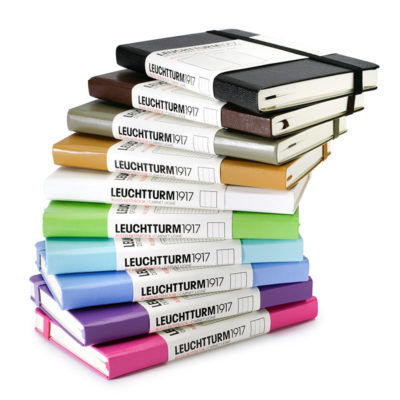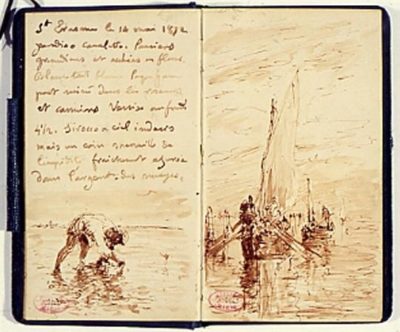 Ten years ago, who would have thought that in a world oversaturated with “smart” phones, old-fashioned notebooks would once again become a “hot trend”? And that they would be passionately fawned over by the younger generation – online, of all places?
Ten years ago, who would have thought that in a world oversaturated with “smart” phones, old-fashioned notebooks would once again become a “hot trend”? And that they would be passionately fawned over by the younger generation – online, of all places?
In a way, history is repeating itself. While the story of portable notebooks goes back a long way (Leonardo da Vinci, 1452–1519, was reportedly never seen without one), the real breakthrough came in 19th century Paris. The world’s artist capital at the time was home to thousands of young creatives, thinkers and dreamers. New movements such as Impressionism demanded that artists leave their stuffy studios and cramped writer’s desks and instead move out into the world – in search of natural light, common people and all that life had to offer. Artists, it was demanded, should create in the midst of the sights and sounds of the outside world. A new and exciting artistic focus and methodology took hold. Here lie, we can argue, the true roots of today’s creative mobile work culture.
The now unconfined free-range artists of Paris needed – in modern parlance – “portable media” to “create and access their content” wherever they went. Soon, Parisian book binders were doing brisk business with blank, compact notebooks to be carried around constantly and almost anywhere: small, but sturdy enough for both pocket carry as well as use on a tiny café table. Or on a knee while lounging on a park bench. Or while laying flat on the ground among Mother Nature’s glory.
Demand for the hand-made creations of hundreds of Parisian artisan book binders swept across Europe. Soon, German, Italian and English craftsmen eagerly joined the trend. Decades later, English author Bruce Chatwin summed up the importance of these personal notebooks: „To lose a passport was the least of one’s worries: to lose a notebook was a catastrophe.“
But eventually, economic crisis and two world wars changed consumer priorities. When the post-war dust settled, mass production in cheap labor countries and the rapid adoption of the disposable ballpoint pen turned personal notebooks from prized expressions of creativity to generic commodity. By the 1980s, high-quality, stitched pocket notebooks had become a rare specialty item. Instead, mass-market retailers were stocked with soulless notebooks of inferior quality and little consistency. Most were cheaply stapled, glued or spiral bound. The paper? Thin, highly acidic scratch paper lacking durability. Little of it was suitable for writing or drawing in ink – and didn’t need to be, since by then, equally soulless, disposable plastic sticks had become the most popular writing instruments. For fountain pen users (including this author) the situation was rather frustrating. Many gave up and never adopted consistent pocket “notebooking” habits.
But in a surprising turnaround, things have changed dramatically. High quality pocket notebooks are widely available gain, and their makers are enjoying great commercial success.
Modern pocket notebooks incorporate various innovations, such as highly flexible, innovative bindings, and some even make it very easy to digitize content and share it in the digital realm.
To read more, please see my article on pocket notebooks in the June 2017 issue of Pen World magazine, the world’s largest publication for fountain pens and fine writing instruments.

And if you like pens as much as I do, I highly recommend subscribing to this excellent magazine. A bargain at $42 in the U.S.! (International subscriptions are available).

